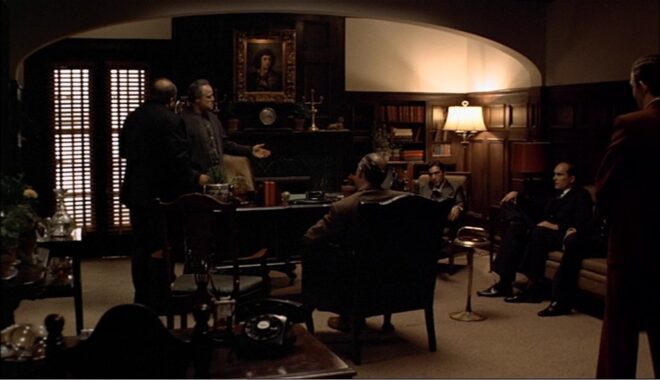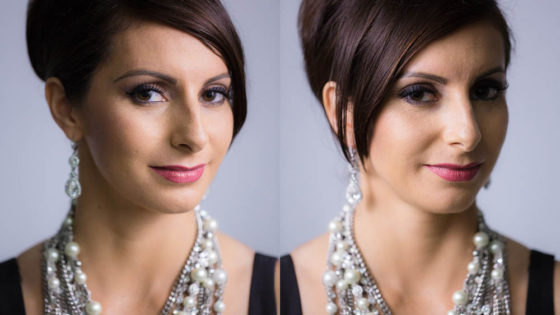I continue to saturate myself in the script for the yet-to-be-announced Shakespearian film. Some other little projects I had going on have now wrapped up, leaving me free to concentrate purely on this production, which is due to start shooting a month from now.
I spent the best part of last Monday reading a new draft of the screenplay and updating my spreadsheet of notes to reflect the changes. Going back over this spreadsheet and the script and re-evaluating them from different angles formed a signficant part of the rest of the week. On Thursday, for example, I focused on the swordfight (narrows it down, Shakespeare fans!), scouring YouTube for reference videos and noting which camera angles seem most dangerous and engaging. In fact, watching references was another big part of the week. I worked my way through the whole Godfather trilogy (above), some more episodes of Servant, bits of several action movies that have a specific type of night exterior, and a couple of the lead actor’s recent films, to see how other DPs have lit and lensed him.
At the end of the week I went back over the spreadsheet and filled in at least one idea for every scene that did not yet have an entry in its “camera” or “lighting” column. Sometimes this would be an idea for a specific shot – e.g. “angle from outside the window looking in”; sometimes it would be a general vibe for the camerawork – e.g. “close, handheld, intimate”; sometimes a specific source – e.g. “soft top-light rigged to ladder”; sometimes a more general lighting note – e.g. “group in a patch of light, surroundings dark”.
Production sent over the quotes they have received for my camera list. At least one of them was within the budget, so that’s good! This week I’ll discuss that with the producers and hopefully decide which rental house we’re going with.
Speaking of equipment, a cheap novelty optical item arrived from eBay. I used this and my iPad to shoot a very rough demonstration of how we might achieve a special effect in camera, sending the video to the director for his feedback. He liked it, and wants to add in a few more instances of it throughout the film.
Another idea I proposed was a lighting effect, for which I sent the director this video I’d found online (below). I don’t intend to do something exactly like this in the film, but I saw a way it could be modified to our story. I ended up shooting my own rough test that is closer to how I see it working in our film.
Less exciting than any of the above, but very important, was taking an online Screenskills course in Covid awareness. I’d done the Basic Awareness course already, which takes about 30 minutes including a brief quiz, but Screenskills were offering free places for HoDs on a more in-depth course, so I signed up. This consisted of a three-hour presentation about the virus, how it can spread on set and what can be done to mitigate it in various departments, followed by another quiz. I learnt a few new things and my awareness was indeed raised.




